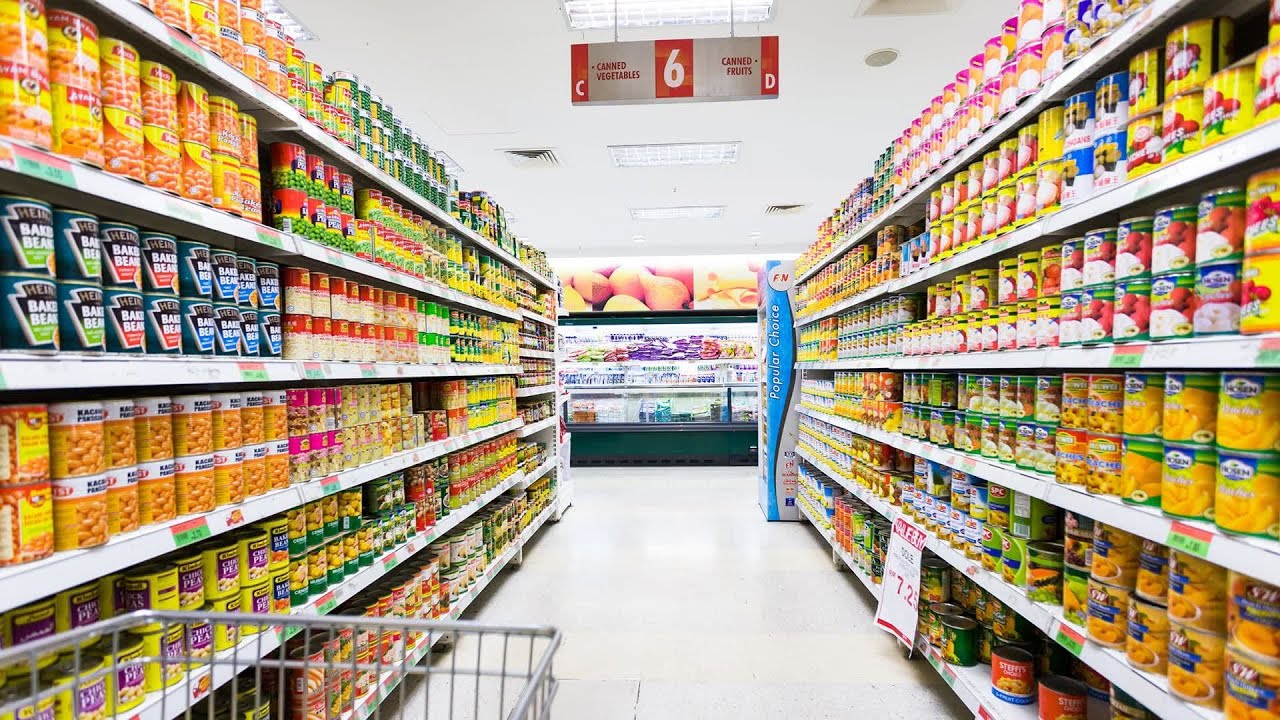Groceries are an essential part of everyday life, providing the necessary food, beverages, and household items to sustain a comfortable and healthy lifestyle. Whether shopping for a family, an individual, or a business, understanding different grocery categories can help optimize shopping experiences, save money, and ensure a well-balanced diet. This guide explores the various aspects of grocery shopping, including food staples, beverages, and household essentials, offering tips for smart shopping and storage.
Food
Food is the most crucial component of grocery shopping. It can be broadly categorized into fresh produce, dairy products, grains, proteins, and snacks.
1. Fresh Produce
Fresh fruits and vegetables are rich in vitamins, minerals, and fiber. They are essential for a balanced diet and can be categorized into:
- Fruits: Apples, bananas, oranges, berries, grapes, melons, and tropical fruits like mangoes and pineapples.
- Vegetables: Leafy greens (spinach, lettuce, kale), root vegetables (carrots, potatoes, beets), and cruciferous vegetables (broccoli, cauliflower, cabbage).
Benefits of Fresh Produce
- Rich in antioxidants and nutrients.
- Low in calories but high in fiber.
- Supports immune health and digestion.
2. Dairy Products
Dairy provides essential calcium, protein, and probiotics. Common dairy items include:
- Milk: Whole, skim, almond, soy, or oat milk.
- Cheese: Cheddar, mozzarella, feta, parmesan.
- Yogurt: Plain, Greek, flavored, or probiotic-rich varieties.
- Butter and Cream: Essential for baking and cooking.
Health Considerations
- Choose low-fat or plant-based options for dietary restrictions.
- Opt for yogurt with live cultures for gut health.
3. Grains and Cereals
Grains provide carbohydrates and fiber for energy. Common choices include:
- Whole Grains: Brown rice, quinoa, whole wheat flour, oats.
- Pasta and Noodles: Wheat pasta, rice noodles, ramen.
- Cereals and Breakfast Foods: Granola, muesli, cornflakes.
- Bread and Baked Goods: Whole grain bread, tortillas, bagels.
Choosing Healthy Grains
- Opt for whole grains over refined grains.
- Look for fiber-rich options to aid digestion.
4. Protein Sources
Protein is crucial for muscle growth and overall health. Sources include:
- Meat and Poultry: Chicken, beef, pork, lamb.
- Seafood: Salmon, shrimp, tuna, cod.
- Plant-Based Proteins: Lentils, chickpeas, tofu, tempeh.
- Eggs: A versatile and protein-rich staple.
- Nuts and Seeds: Almonds, walnuts, chia seeds, flaxseeds.
Storage Tips
- Keep meats refrigerated or frozen.
- Store nuts in airtight containers to prevent spoilage.
5. Snacks and Packaged Foods
Convenience foods are part of modern grocery shopping. Some popular items include:
- Chips and Crackers: Potato chips, pretzels, popcorn.
- Cookies and Sweets: Biscuits, chocolates, granola bars.
- Canned Goods: Soups, beans, vegetables, fruits.
- Frozen Foods: Pizza, vegetables, ice cream.
Healthier Choices
- Choose baked snacks over fried.
- Opt for low-sodium and preservative-free options.
Beverages
Beverages are a vital part of grocery shopping, ranging from water and soft drinks to coffee, tea, and alcoholic drinks.
1. Water and Hydration
Staying hydrated is crucial for health. Options include:
- Bottled Water: Spring water, purified water.
- Sparkling Water: Flavored and unflavored options.
- Electrolyte Drinks: Sports drinks for hydration.
2. Coffee and Tea
Caffeinated beverages are popular worldwide.
- Coffee: Instant, ground, espresso, cold brew.
- Tea: Green, black, herbal, matcha.
3. Juice and Smoothies
Fruit and vegetable juices provide nutrients.
- Fresh Juice: Orange, apple, carrot, pomegranate.
- Smoothies: Blended fruits, protein shakes.
4. Soft Drinks and Energy Drinks
These are common but should be consumed in moderation.
- Soda: Carbonated drinks with various flavors.
- Energy Drinks: High caffeine and sugar content.
5. Alcoholic Beverages
For those who consume alcohol, options include:
- Beer: Lager, ale, craft beer.
- Wine: Red, white, rosé.
- Spirits: Whiskey, vodka, rum, gin.
Household Essentials
Household essentials include cleaning supplies, personal care items, and pet supplies.
1. Cleaning Supplies
Keeping a home clean requires various products, including:
- Detergents and Soaps: Laundry detergent, dish soap.
- Disinfectants: Surface sprays, wipes, hand sanitizers.
- Garbage Bags and Paper Towels: Essential for waste disposal and cleaning.
2. Personal Care Items
Hygiene products are an essential part of grocery shopping.
- Toiletries: Toothpaste, shampoo, soap.
- Feminine Hygiene Products: Sanitary pads, tampons.
- First-Aid Supplies: Bandages, antiseptics.
3. Pet Supplies
For pet owners, groceries also include:
- Pet Food: Dry and wet food for dogs and cats.
- Litter and Hygiene Products: Cat litter, pet shampoo.
- Toys and Accessories: Leashes, scratching posts.
Smart Grocery Shopping Tips
To make grocery shopping efficient, follow these tips:
1. Plan Ahead
- Make a shopping list to avoid impulse buying.
- Plan meals to buy only necessary items.
2. Buy in Bulk
- Purchase non-perishables in bulk for cost savings.
- Store bulk items properly to prevent waste.
3. Compare Prices and Brands
- Check unit prices for better deals.
- Look for discounts and coupons.
4. Choose Fresh and Seasonal Items
- Buy locally grown fruits and vegetables.
- Seasonal produce is often fresher and cheaper.
5. Store Groceries Properly
- Keep perishables refrigerated.
- Use airtight containers for dry goods.
Conclusion
Grocery shopping is a vital part of everyday life, encompassing food, beverages, and household essentials. Understanding different categories and making informed choices can lead to healthier eating habits, cost savings, and efficient household management. With smart shopping strategies, one can maximize grocery budgets while maintaining quality and freshness.






